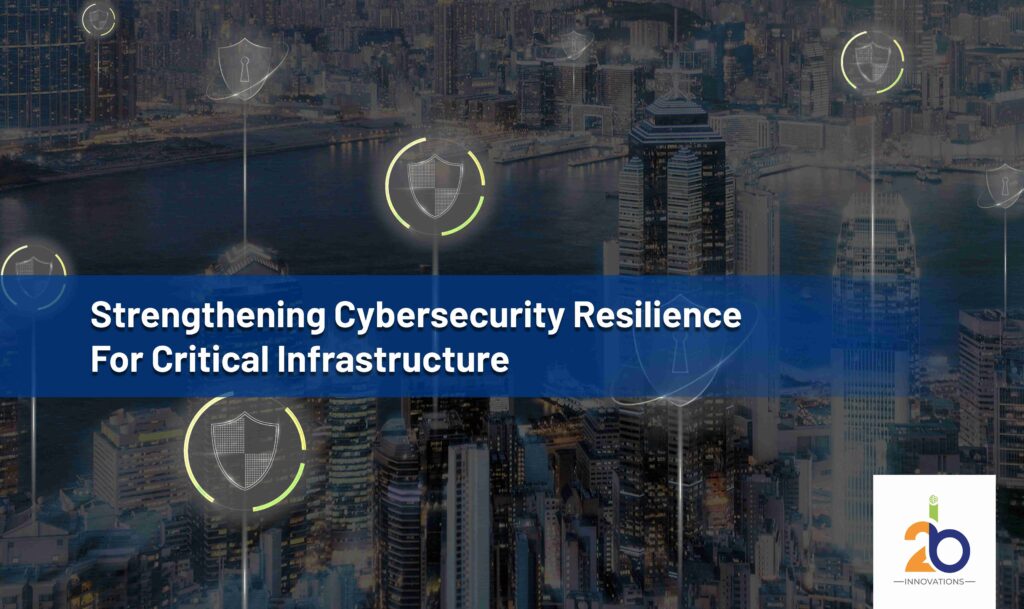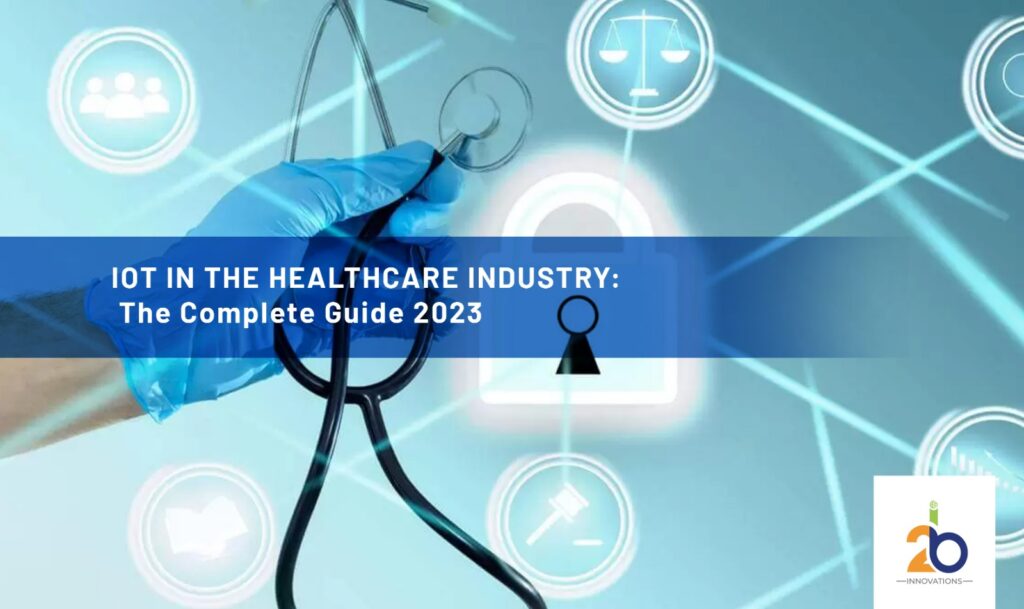
Critical infrastructure is the backbone of modern society, encompassing several sectors. These sectors are the lifeblood of our daily lives, ensuring we have access to essentials like electricity, clean water, and secure communication. They underpin the functioning of economies, governments, and societies at large.
However, as we venture further into the digital age, our critical infrastructure becomes increasingly interconnected and dependent on technology. While this brings efficiency and convenience, it also exposes these vital systems to a growing array of cybersecurity threats and vulnerabilities.
In 2023, the need to fortify our defenses against cyberattacks on critical infrastructure has never been more pressing!
Proceed to understand the crucial role of critical infrastructure in our lives, the rising challenges posed by cyber threats, and the strategies and collaborations essential for strengthening resilience in the face of evolving cybersecurity risks.
So without any further ado, let’s dive right in.
What Do You Understand By Critical Infrastructure?
Critical infrastructure refers to the essential systems and assets, both physical and virtual, that are vital to the functioning of a society, economy, and national security. These infrastructures are so crucial that their disruption or destruction could have a debilitating impact on a nation’s well-being, safety, and economic stability.
Critical infrastructure encompasses a wide range of sectors, including energy, transportation, healthcare, telecommunications, water supply, and more. In modern society, these sectors are highly interconnected and reliant on advanced technology for their operation and management.
Examples of Critical Infrastructure:
- Energy Grids:
Energy infrastructure includes power generation facilities, electricity grids, and oil and gas pipelines. Disruptions in this sector can lead to blackouts, affecting industries, homes, and essential services.
- Transportation Systems:
This sector includes roadways, railways, airports, ports, and public transit systems. Disruptions can result in transportation bottlenecks, hindering the movement of people and goods.
- Healthcare:
Critical healthcare infrastructure includes hospitals, clinics, pharmaceutical manufacturing, and medical supply chains. Disruptions can impede the delivery of medical services and the availability of essential drugs and equipment.
- Water Supply:
Water infrastructure encompasses water treatment plants, distribution systems, and wastewater management. Contaminations or disruptions can lead to health crises and environmental issues.
- Telecommunications:
This sector involves communication networks, internet service providers, and satellite systems. Disruptions can impair communication, emergency response, and access to information.
- Financial Services:
Financial infrastructure includes banks, stock exchanges, and payment processing systems. Disruptions can undermine economic stability and disrupt financial transactions.
- Government Services:
Government infrastructure includes facilities and systems that support public administration, law enforcement, and emergency management. Disruptions can compromise public safety and government operations.
Interconnectedness Of Critical Infrastructure With Modern Technology:
Modern critical infrastructure is intricately linked to advanced technology in several ways:
- Digital Control: Many systems use digital controls for efficiency and remote management.
- Data Analytics: Utilize advanced computing and sensors for optimization.
- Communication Networks: Depend on networks for coordination and data transmission.
- Cybersecurity: Vulnerable to cyberattacks, requiring robust protection.
- IoT Integration: Use IoT for enhanced monitoring and control.
- Resilience Planning: Technology aids in preparedness for threats and disasters.
Understanding the relationship between critical infrastructure and modern technology is crucial for ensuring their resilience and safeguarding against emerging challenges.
Cybersecurity Threats To Critical Infrastructure:
Critical infrastructure, such as power grids, water supplies, transportation systems, and healthcare facilities, plays a vital role in our daily lives. Protecting these systems from cyber threats is crucial to ensure the functioning of society.
Here are some common cyber threats and real-world examples of cyberattacks on critical infrastructure:
- Ransomware Attacks:
Ransomware is a prevalent threat where cybercriminals encrypt a system’s data and demand a ransom for its release.
Example: In April 2023, the “DarkLock” ransomware crippled a major metropolitan transportation network, causing widespread chaos and highlighting the vulnerability of public transit systems.
- Nation-State Attacks:
Nation-states often target critical infrastructure for espionage, disruption, or as part of a larger geopolitical strategy.
Example: In early 2023, a nation-state-backed group launched a cyberattack on a European power grid, temporarily disrupting electricity distribution, emphasizing the persistent threat from state-sponsored actors.
- Insider Threats:
Insiders with access to critical infrastructure systems can pose a significant risk, intentionally or unintentionally compromising security.
Example: A disgruntled employee at a water treatment facility in 2023 attempted to manipulate chemical levels through unauthorized access, underscoring the need for stringent access controls.
- Phishing and Social Engineering:
Attackers often use phishing emails or social engineering tactics to gain access to critical infrastructure systems.
Example: In 2023, a phishing campaign targeted a major healthcare provider, compromising sensitive patient data and momentarily disrupting medical services.
- Supply Chain Attacks:
Cybercriminals can compromise the supply chain of critical infrastructure components or software, introducing vulnerabilities.
Example: The SolarWinds supply chain attack in 2020 targeted a software vendor, enabling attackers to compromise numerous government and corporate systems, potentially including critical infrastructure entities.
- Advanced Persistent Threats (APTs):
APTs are long-term, stealthy attacks by well-funded adversaries targeting specific organizations.
Example: The “Labyrinth” APT group, linked to a nation-state, launched a long-term campaign against a national energy grid in 2023, highlighting the tenacity of such threats.
- Internet of Things (IoT) Vulnerabilities:
IoT devices used in critical infrastructure can be vulnerable to cyberattacks if not adequately secured.
Example: The Mirai BotNet in 2016 targeted IoT devices, including routers and cameras, disrupting internet services and potentially posing a threat to critical infrastructure connected to the internet.
The Need For Cybersecurity Resilience:
In the ever-evolving landscape of cybersecurity threats in 2023, traditional measures alone are no longer sufficient to protect organizations and individuals. This necessitates the adoption of cybersecurity resilience as a fundamental strategy. Here’s why:
- Evolving Threat Landscape:
Cyber threats have become increasingly sophisticated and dynamic, making it challenging for static, rule-based security measures to keep up.
Importance of Resilience: Cybersecurity resilience focuses on adaptability, ensuring that systems can detect, respond to, and recover from a wide range of threats, both known and unknown.
- Zero-Day Vulnerabilities:
Zero-day vulnerabilities, which are unknown to vendors and therefore lack patches, pose a severe risk. Attackers exploit these before security updates are available.
Importance of Resilience: A resilient cybersecurity approach includes proactive monitoring, threat intelligence, and incident response plans that can address zero-day threats swiftly.
- Human Error and Insider Threats:
Many security incidents result from human error or malicious actions by insiders with legitimate access.
Importance of Resilience: Resilience involves a holistic approach, which includes not only technology but also training and culture. It focuses on minimizing the impact of insider threats and errors while maintaining business continuity.
- Supply Chain Attacks:
Attackers increasingly target the supply chain, compromising trusted vendors and software updates to infiltrate organizations.
Importance of Resilience: Resilience includes supply chain risk assessments and diversification of suppliers, ensuring that an attack on one part of the supply chain doesn’t cripple an entire organization.
- Ransomware and Extortion:
Ransomware attacks have become more prevalent and sophisticated, causing widespread damage and financial losses.
Importance of Resilience: Resilience prepares organizations with robust backup and recovery plans, reducing the incentive for paying ransoms and ensuring business continuity.
- Regulatory and Compliance Changes:
Cybersecurity regulations and compliance requirements are constantly evolving, making it challenging to maintain a static, compliant state.
Importance of Resilience: Resilience entails adaptable policies and practices that can quickly conform to changing regulatory landscapes.
- Interconnectedness of Systems:
Modern organizations rely on interconnected systems and the cloud, creating a broader attack surface.
Importance of Resilience: Resilience involves segmenting networks, adopting a “zero-trust” approach, and ensuring that a breach in one area doesn’t compromise the entire network.
Strategies For Strengthening Resilience:
Enhancing cybersecurity resilience in critical infrastructure is imperative in the coming years to protect against evolving threats. Here are best practices to achieve this:
- Comprehensive Threat Monitoring:
Continuous monitoring of network traffic and systems for anomalies and suspicious activities is essential.
Best Practice: Implement advanced threat detection tools that use artificial intelligence and machine learning to identify abnormal behavior and potential threats in real-time.
- Incident Response Planning:
Being prepared for cyber incidents is crucial. A well-defined incident response plan minimizes damage and downtime.
Best Practice: Develop and regularly test an incident response plan that outlines roles, responsibilities, and communication procedures to effectively contain and recover from cyberattacks.
- Employee Training and Awareness:
Human error is a common cybersecurity weakness. Employees need to be trained to recognize and respond to threats.
Best Practice: Conduct regular cybersecurity awareness training to educate employees about phishing, social engineering, and safe online practices. Encourage reporting of suspicious activities.
- Segmentation and Zero Trust:
Isolate critical systems from less secure areas and adopt a zero-trust approach, where trust is never assumed, even within the network.
Best Practice: Implement network segmentation and require identity verification for all users and devices, granting the least privilege necessary.
- Regular Vulnerability Assessments:
Identifying and patching vulnerabilities is crucial to resilience.
Best Practice: Conduct regular vulnerability assessments and penetration testing to identify weaknesses and address them promptly.
- Backup and Recovery:
Data backups are essential for recovering from ransomware attacks and other incidents.
Best Practice: Maintain frequent backups of critical data and systems, ensuring they are isolated from the network to prevent ransomware attackers from encrypting them.
- Supply Chain Risk Management:
Assess the cybersecurity posture of third-party suppliers and vendors to minimize supply chain risks.
Best Practice: Establish supplier security standards, conduct audits, and diversify suppliers to reduce reliance on a single source.
- Threat Intelligence Sharing:
Collaboration with industry peers and government agencies can provide valuable threat intelligence.
Best Practice: Participate in information-sharing networks and organizations to stay informed about emerging threats and effective defense strategies.
- Regulatory Compliance:
Adherence to cybersecurity regulations is essential for resilience.
Best Practice: Stay up-to-date with evolving compliance requirements and integrate them into your cybersecurity strategy.
- Cybersecurity Culture:
Fostering a culture of cybersecurity awareness and accountability is vital.
Best Practice: Promote a culture where security is everyone’s responsibility, from the leadership down to every employee.
Public And Private Sector Collaboration In Critical Infrastructure Security:
Public and private sector collaboration is vital for enhancing the cybersecurity resilience of critical infrastructure. In this partnership, government agencies and private companies play distinct yet complementary roles in safeguarding essential systems and services.
Role of Government Agencies:
- Regulation and Compliance:
Government agencies, such as the Department of Homeland Security (DHS) in the United States, establish cybersecurity regulations and standards that private companies must adhere to. These regulations create a baseline for cybersecurity practices, ensuring a minimum level of protection across critical infrastructure sectors.
- Threat Intelligence and Analysis:
Government agencies often possess extensive threat intelligence capabilities. They collect and analyze data on cyber threats, helping private companies stay informed about emerging risks and vulnerabilities that could impact their infrastructure.
- Incident Response and Coordination:
In the event of a cyber incident, government agencies assist private companies by providing resources, expertise, and coordination. This includes sharing threat indicators, offering guidance on incident response, and facilitating collaboration with law enforcement when necessary.
- Information Sharing:
Government agencies facilitate information sharing among private sector entities, fostering a collaborative approach to cybersecurity. This sharing of information helps companies better understand threats and vulnerabilities and improve their defensive strategies.
Role of Private Companies:
- Infrastructure Ownership and Management:
Private companies own and operate critical infrastructure, making them responsible for implementing robust cybersecurity measures. They invest in technology, personnel, and processes to protect their assets.
- Innovation and Technology:
Private companies are at the forefront of cybersecurity innovation. They develop and deploy cutting-edge technologies and solutions to defend against evolving cyber threats.
- Compliance and Risk Management:
Private sector organizations must adhere to government regulations and industry standards, ensuring that their cybersecurity practices align with established guidelines. They conduct risk assessments and implement security measures accordingly.
- Incident Detection and Mitigation:
Private companies are the first line of defense against cyber threats. They detect and respond to incidents promptly, minimizing the impact on critical infrastructure.
Improving Cybersecurity Resilience through Collaboration:
- Shared Expertise:
Collaboration allows government agencies and private companies to combine their expertise. Private companies bring industry-specific knowledge, while government agencies contribute threat intelligence and national security insights. This synergy enhances overall cyber defense capabilities.
- Resource Pooling:
Partnerships enable the sharing of resources and information. Private companies can access government-provided tools, threat intelligence, and incident response support, bolstering their cybersecurity defenses without significant additional cost.
- Coordinated Response:
In the event of a large-scale cyber incident, a coordinated response is crucial. Public and private sector collaboration ensures a unified approach, reducing response time and minimizing damage.
- Resilience Planning:
Joint efforts help in the development of resilience strategies that consider both public and private interests. This holistic approach ensures that critical infrastructure remains operational even in the face of cyber threats.
Regulatory and Compliance Frameworks in Critical Infrastructure Cybersecurity:
In the domain of critical infrastructure cybersecurity, regulatory and compliance frameworks play a pivotal role in ensuring the security and resilience of essential systems.
These frameworks provide a structured approach to cybersecurity, helping organizations establish robust defenses and respond effectively to cyber threats.
- NIST Cybersecurity Framework (National Institute of Standards and Technology):
The NIST Cybersecurity Framework is widely recognized and adopted in the United States. It offers a comprehensive set of guidelines, standards, and best practices for improving critical infrastructure cybersecurity.
It consists of five key functions: Identify, Protect, Detect, Respond, and Recover. Organizations assess their current cybersecurity posture and use the framework to develop risk-based strategies and controls.
- CIP Standards (Critical Infrastructure Protection):
The North American Electric Reliability Corporation (NERC) enforces cybersecurity regulations known as Critical Infrastructure Protection (CIP) standards.
These standards are specifically tailored to the energy sector and mandate security measures such as access controls, incident response planning, and continuous monitoring to safeguard the power grid and related infrastructure.
- EU NIS Directive (European Union Network and Information Systems Directive):
The EU NIS Directive is a European Union regulation that requires operators of essential services, including energy, transportation, and healthcare, to implement cybersecurity measures and report significant cyber incidents.
It aims to enhance the overall resilience of critical infrastructure in the European Union.
- ISA/IEC 62443 (Industrial Automation and Control Systems Security):
ISA/IEC 62443 is a series of standards that focus on cybersecurity for industrial automation and control systems (IACS).
These standards are particularly relevant to critical infrastructure sectors such as manufacturing, water treatment, and chemical processing. They provide guidelines for securing industrial control systems from cyber threats.
- ISO 27001 (International Organization for Standardization):
ISO 27001 is a globally recognized standard for information security management systems (ISMS).
While not specific to critical infrastructure, it offers a framework for organizations to establish, implement, maintain, and continually improve their information security management processes. Many critical infrastructure entities use ISO 27001 as a foundation for their cybersecurity programs.
Adhering to these regulatory and compliance frameworks can significantly improve cybersecurity resilience in critical infrastructure:
- Standardized Security Measures:
These frameworks provide standardized security measures and practices that organizations can implement. This consistency ensures that critical infrastructure entities have a baseline of cybersecurity controls in place.
- Risk Mitigation:
Compliance with these frameworks helps organizations identify and mitigate cybersecurity risks effectively. By following recommended practices, they can reduce vulnerabilities and strengthen their defenses against cyber threats.
- Incident Response:
Regulatory frameworks often include requirements for incident response planning and reporting. This preparedness is crucial for minimizing the impact of cyber incidents on critical infrastructure and facilitating a swift recovery.
- Collaboration:
Compliance requirements often encourage collaboration and information sharing among critical infrastructure entities. This collective approach enhances situational awareness and promotes a coordinated response to emerging cyber threats.
Emerging Technologies & Innovations In Cybersecurity For Critical Infrastructure:
Emerging technologies play a pivotal role in strengthening cybersecurity for critical infrastructure in 2023. They offer innovative solutions to combat increasingly sophisticated cyber threats.
Here’s a concise exploration of their roles and potential future trends:
- Artificial Intelligence (AI) in Cybersecurity:
Role: AI is a game-changer for cybersecurity. Machine learning algorithms can analyze vast datasets, detect anomalies, and identify threats in real-time.
Benefits: AI-driven security solutions can automate threat detection, enhance incident response, and adapt to evolving threats without human intervention.
- Blockchain Technology:
Role: Blockchain’s decentralized and tamper-resistant nature can secure critical infrastructure by ensuring data integrity, authentication, and secure transactions.
Benefits: It can prevent unauthorized access, protect against data manipulation, and enhance supply chain security.
- Zero Trust Architecture:
Role: Zero Trust is an evolving concept that emphasizes the verification of every user, device, and network segment, reducing the attack surface.
Benefits: It minimizes the risk of insider threats and lateral movement by treating every access attempt as potentially malicious.
- Biometric Authentication:
Role: Biometrics, such as fingerprint and facial recognition, are becoming integral to secure access control.
Benefits: They provide a more secure and user-friendly authentication method for critical infrastructure systems.
- 5G Technology:
Role: 5G networks offer high-speed, low-latency communication, enabling faster data transfer and real-time threat response.
Benefits: Critical infrastructure can leverage 5G for more robust and responsive security systems.
- IoT Security Solutions:
Role: As IoT devices proliferate in critical infrastructure, dedicated security solutions are emerging to protect them.
Benefits: These solutions offer device authentication, encryption, and centralized management to mitigate IoT-related risks.
- Cloud-Native Security:
Role: With the increasing adoption of cloud infrastructure, security solutions are evolving to protect cloud-native applications and data.
Benefits: These solutions offer scalability, automation, and improved visibility into cloud environments.
- Cybersecurity Orchestration and Automation:
Role: Orchestrating and automating security processes can streamline incident response and reduce human error.
Benefits: It enables faster threat containment and reduces response times.
Challenges and Future Outlook in Strengthening Cybersecurity Resilience:
Challenges:
- Sophisticated Threat Landscape:
Cyber threats are becoming increasingly sophisticated, with attackers using advanced techniques to exploit vulnerabilities. This complexity makes it challenging for critical infrastructure to stay ahead of potential risks.
- Interconnected Systems:
Critical infrastructure systems are highly interconnected, which means that a breach in one area can potentially cascade across sectors. Isolating and securing these interconnections is a formidable challenge.
- Resource Constraints:
Many critical infrastructure organizations face resource constraints, including budget limitations and a shortage of cybersecurity professionals. This makes it difficult to implement and maintain robust cybersecurity measures.
- Legacy Systems:
Some critical infrastructure systems still rely on legacy technology, which may lack adequate security features. Updating these systems without disrupting operations is a significant challenge.
- Human Error:
Human error remains a prevalent cause of cybersecurity incidents. Training and raising awareness among employees and stakeholders are ongoing challenges.
Future Outlook:
- AI and Machine Learning:
The use of artificial intelligence (AI) and machine learning is expected to grow in critical infrastructure cybersecurity. These technologies can analyze vast amounts of data in real-time to identify and respond to threats more effectively.
- Zero Trust Architecture:
The adoption of a Zero Trust security model, where trust is never assumed, will become more prevalent. This approach limits access to systems and data only to those who need it, reducing the attack surface.
- Supply Chain Security:
As supply chain attacks increase, there will be a greater focus on securing the entire supply chain. Organizations will scrutinize third-party vendors and implement measures to verify the integrity of components and software.
- Regulatory Evolution:
Regulatory frameworks will continue to evolve to address emerging cyber threats. Expect stricter cybersecurity requirements and increased penalties for non-compliance.
- Public-Private Collaboration:
Collaboration between government agencies and private sector entities will deepen. This partnership is crucial for sharing threat intelligence and coordinating responses to cyber incidents.
- Resilience Planning:
Organizations will prioritize resilience planning. This includes not only cybersecurity measures but also strategies for rapid recovery in the face of cyber disruptions.
Final Words
- Critical infrastructure underpins our daily lives, making its cybersecurity resilience paramount. With escalating cyber threats, collaborative efforts and regulatory compliance are crucial. However, resource constraints and interconnected systems pose challenges. The future involves AI, Zero Trust, supply chain security, evolving regulations, and increased collaboration. Safeguarding critical infrastructure is imperative for the stability and security of our modern world.



